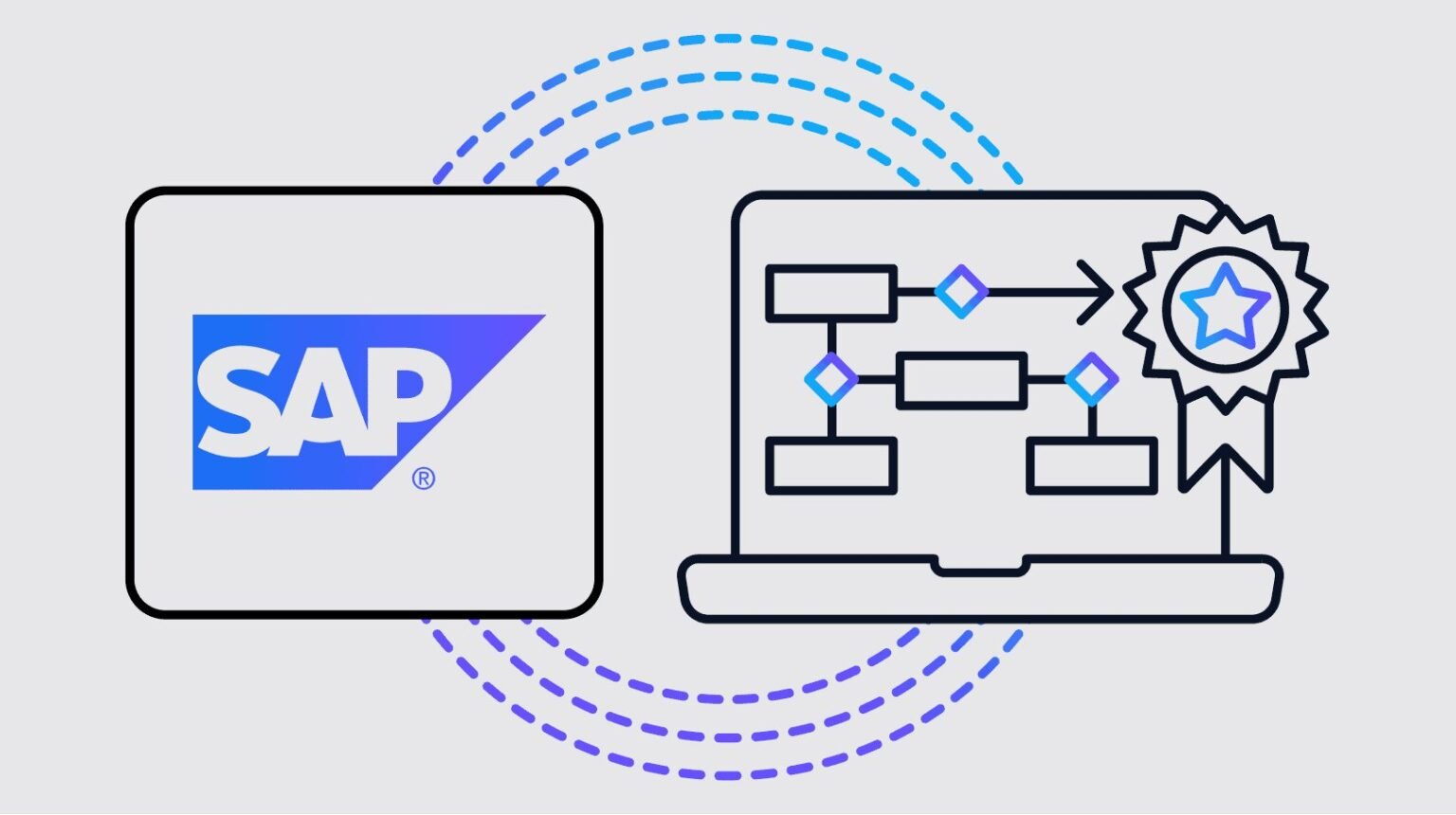Summary
The April 2023 release of SAP Build Process Automation includes the ability to trigger a business process directly from automation without the need for code. This allows for greater flexibility in automating different workflows based on specific conditions. To do this, the automation project must be created and deployed in SAP Build Process Automation, and the necessary API triggers and input parameters must be configured.
This blog post provides a step-by-step guide on how to call a business process workflow from automation. Additionally, it explains the process for authenticating with OAuth 2 and includes a custom script to fetch the token and execute the API call. The blog post also offers tips for turning the project into a generic solution for calling workflow APIs from automation.


SAP BUILD PROCESS AUTOMATION – HOW TO TRIGGER PROCESS(ES) FROM AN AUTOMATION
Introduction
In today’s fast-paced and highly competitive business environment, organizations are constantly seeking ways to improve their efficiency and productivity. One area that has seen significant advancements is process automation. By automating repetitive tasks and workflows, businesses can streamline their operations, reduce errors, and achieve better outcomes.
In this article, we will explore the concept of SAP build process automation and how it enables organizations to trigger processes from an automated system.
What is SAP Build Process Automation?
SAP Build Process Automation refers to the use of technology and software tools to automate and streamline various processes within the SAP ecosystem. SAP’s newest addition to the market based on “no code, low code” principle. It involves integrating different systems, applications, and workflows to enable efficient execution of tasks and activities.
By leveraging SAP Build Process Automation, organizations can reduce manual intervention, eliminate human errors, and improve overall operational efficiency. This automation capability allows businesses to trigger processes automatically based on predefined triggers and dependencies.
Achieve Hyper-automation in Your Business with SAP Process Automation
Leverage advanced automation in your process to make your valuable time more fruitful. SAP Process Automation will help ...
Benefits of SAP Build Process Automation
- Enhanced Efficiency: Automation reduces the time and effort required to perform repetitive tasks, enabling employees to focus on more value-added activities.
- Improved Accuracy: By eliminating manual errors, SAP Build Process Automation ensures consistent and error-free process execution.
- Cost Savings: Automating processes results in cost savings by reducing the need for human resources and minimizing errors that may lead to costly rework.
- Scalability: As businesses grow, SAP Build Process Automation allows for easy scaling as it can handle an increasing volume of work without compromising quality.
- Enhanced Visibility and Control: Automation provides real-time visibility into processes, enabling organizations to monitor and manage workflows effectively.
- Shorter Cycle Times: With automation, businesses can accelerate their process cycle times, leading to faster turnaround and improved customer satisfaction.
Components of SAP Build Process Automation
To effectively implement SAP Build Process Automation, organizations need to consider various components that work together to enable seamless automation. These components include:
Automation Tools
Automation tools, such as SAP Business Workflow, SAP Business Process Automation, and SAP Process Orchestration, play a critical role in executing and managing automated processes. These tools offer an intuitive interface with drag-and-drop features, allowing organizations to design and configure automation workflows easily.
Process Integration
Process integration involves connecting and integrating different systems, databases, and applications to enable data exchange and seamless process execution. SAP Integration Suite provides capabilities to integrate SAP and non-SAP systems, ensuring smooth communication and coordination between processes.
Workflow Management
Workflow management tools enable organizations to define, map, and manage their automated workflows. These tools allow businesses to set rules, define triggers and dependencies, and monitor the progress of each workflow. SAP Workflow Management provides a comprehensive solution for managing end-to-end workflows.
Monitoring and Reporting
Monitoring and reporting tools offer real-time visibility into automated processes. These tools enable organizations to track the progress, performance, and bottlenecks in their workflows. SAP Intelligent Robotic Process Automation (RPA) provides advanced monitoring and reporting capabilities, helping businesses identify areas for improvement and optimization.
How to Trigger Processes Using SAP Build Process Automation
Implementing SAP Build Process Automation involves a series of steps to ensure successful automation of processes. Let’s explore how to trigger processes using SAP Build Process Automation:
- Identify the Target Process: Clearly define the process you want to automate and identify its objectives, inputs, and outputs.
- Define Triggers and Dependencies: Determine the conditions that will trigger the automated process. This can include time-based triggers, event-based triggers, or data-driven triggers. Additionally, identify any dependencies or prerequisites for the process.
- Configure Automation Tools: Utilize SAP automation tools to design and configure the automation workflow. Define the sequence of activities, actions, and decision points in the workflow.
- Test and Validate: Before implementing automation in a production environment, thoroughly test and validate the automation workflow. Identify and resolve any issues or errors.
- Implement and Monitor: Once tested and validated, implement the automation workflow in the live environment. Continuously monitor and analyze the performance of the automated process.
How to call a business process workflow from automation in SAP Build Process Automation
Here is a step-by-step guide on how to call a business process workflow from automation in SAP Build Process Automation:
- Create a new workflow in SAP Build Process Automation.
- In the workflow, add a new step of type “Call External API”.
- In the “Call External API” step, specify the following information:
- The URL of the workflow API.
- The OAuth 2 client ID and client secret.
- The scopes that are required to access the workflow API.
- Create a custom script to fetch the OAuth 2 token and execute the API call. The following code snippet shows an example of a custom script that can be used to do this:
def get_token():
"""Gets an OAuth 2 token for the workflow API."""
client_id = "YOUR_CLIENT_ID"
client_secret = "YOUR_CLIENT_SECRET"
grant_type = "client_credentials"
scopes = ["YOUR_SCOPES"]
response = requests.post("https://api.sap.com/auth/oauth/token",
auth=(client_id, client_secret),
data={"grant_type": grant_type, "scope": ",".join(scopes)})
if response.status_code == 200:
return json.loads(response.content)["access_token"]
else:
raise Exception("Failed to get OAuth 2 token")
def call_workflow_api(token, workflow_url):
"""Calls the workflow API."""
response = requests.post(workflow_url, headers={"Authorization": "Bearer " + token})
if response.status_code == 200:
return json.loads(response.content)
else:
raise Exception("Failed to call workflow API")
def main():
token = get_token()
workflow_url = "https://api.sap.com/workflow/v1/workflows/YOUR_WORKFLOW_ID"
call_workflow_api(token, workflow_url)
if __name__ == "__main__":
main()
- Save the custom script and attach it to the “Call External API” step in the workflow.
- Execute the workflow.
The above steps will allow you to call a business process workflow from automation in SAP Build Process Automation. To turn the project into a generic solution for calling workflow APIs from automation, you can follow these tips:
- Use a configuration file to store the OAuth 2 client ID, client secret, and scopes.
- Use a generic API call function that can be used to call any workflow API.
- Create a library of custom scripts that can be used to perform common tasks, such as data validation and error handling.
Use Cases of SAP Build Process Automation
SAP Build Process Automation can be applied to various use cases across different industries. Some common use cases include:
- Software Development Lifecycle (SDLC): Automating the build, test, and deploy processes in software development, ensuring faster delivery and improved quality.
- Supply Chain Management: Automating procurement, inventory management, and order processing, reducing lead times and optimizing inventory levels.
- Human Resources Process Automation: Automating employee onboarding, leave management, and performance appraisal processes, improving HR efficiency.
- Customer Relationship Management (CRM): Automating lead generation, customer support, and sales processes, enhancing customer service and sales effectiveness.
Challenges and Considerations
While SAP Build Process Automation offers numerous benefits, organizations must also consider and address several challenges for successful implementation. These challenges include:
- Integration Complexity: Integrating different systems, applications, and databases across the organization can be complex and time-consuming.
- Change Management: Automation initiatives often require changes in processes and workflows. Proper change management is crucial to ensure smooth adoption and acceptance.
- Security and Compliance: Automation workflows need to comply with data privacy regulations and ensure secure handling of sensitive information.
- Process Standardization: Before automating processes, organizations need to standardize and optimize them to ensure consistent and efficient automation.
Best Practices for Successful SAP Build Process Automation
To maximize the benefits of SAP Build Process Automation, organizations should follow these best practices:
- Clearly Define Objectives and Goals: Clearly articulate the objectives and goals of the automation initiative to align the effort with the organization’s strategic objectives.
- Engage Stakeholders: Involve key stakeholders from different departments and levels in the automation process to gain valuable insights and secure buy-in.
- Prioritize Processes for Automation: Identify and prioritize processes that are repetitive, rule-based, and have a high volume of transactions for automation.
- Optimize and Streamline Processes: Before automation, streamline and optimize processes to eliminate redundancy and inefficiencies.
- Test and Validate Automation Workflows: Thoroughly test and validate the automation workflows to ensure accuracy, reliability, and desired outcomes.
- Provide Training and Support: Train employees on how to use and interact with automated processes. Offer ongoing support and guidance to address any challenges or concerns.
- Continuously Monitor and Improve: Regularly monitor and analyze the performance of automated processes. Identify areas for improvement and apply continuous improvement methodologies to enhance efficiency and effectiveness.
Conclusion
SAP Build Process Automation offers organizations the opportunity to streamline their operations, improve efficiency, and achieve better outcomes. By implementing SAP Build Process Automation, businesses can trigger processes automatically, reducing manual effort, minimizing errors, and enhancing overall productivity.
However, organizations must consider various factors such as integration complexity, change management, security, and process standardization to ensure successful automation. By following best practices and effectively addressing the challenges, organizations can leverage SAP Build Process Automation to gain a competitive edge and drive business growth.
FAQs
1. What is SAP Build Process Automation?
SAP Build Process Automation refers to the use of technology and software tools to automate and streamline various processes within the SAP ecosystem.
2. What are the benefits of SAP Build Process Automation?
Benefits of SAP Build Process Automation include enhanced efficiency, improved accuracy, cost savings, scalability, enhanced visibility and control, and shorter cycle times.
3. What components are required for SAP Build Process Automation?
Components of SAP Build Process Automation include automation tools, process integration, workflow management, and monitoring and reporting.
4. How can processes be triggered using SAP Build Process Automation?
Processes can be triggered using SAP Build Process Automation by identifying the target process, defining triggers and dependencies, configuring automation tools, testing and validating, and implementing and monitoring the automation workflow.
5. What are some use cases of SAP Build Process Automation?
SAP Build Process Automation can be applied to use cases such as software development lifecycle, supply chain management, human resources process automation, and customer relationship management.


